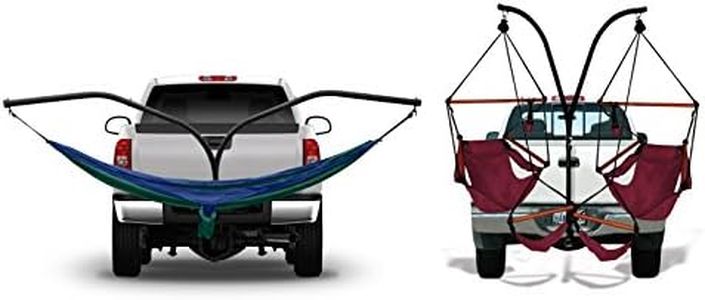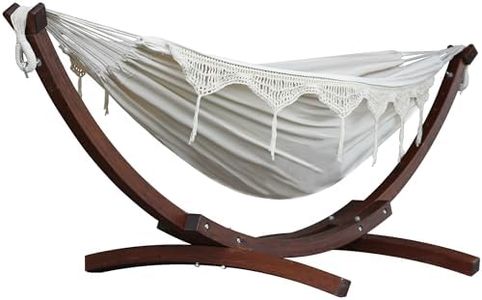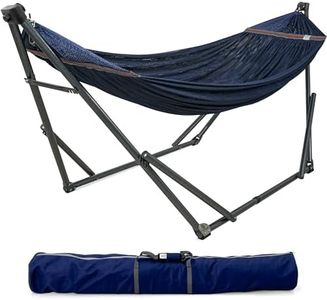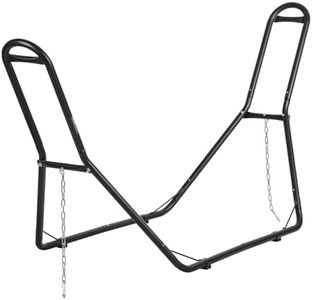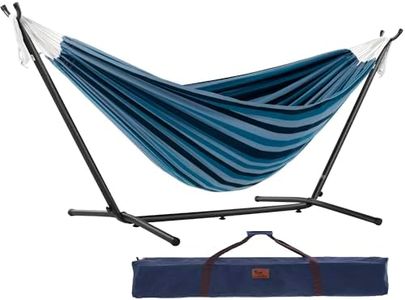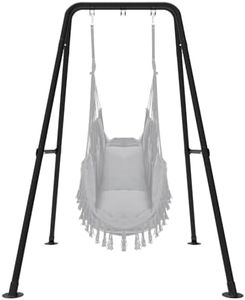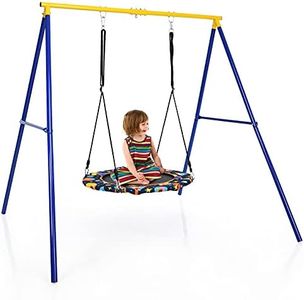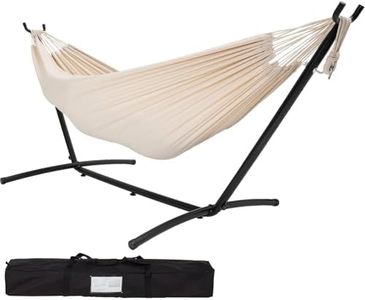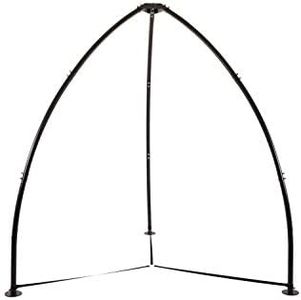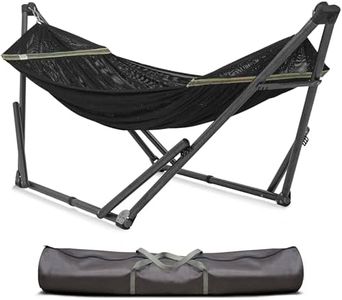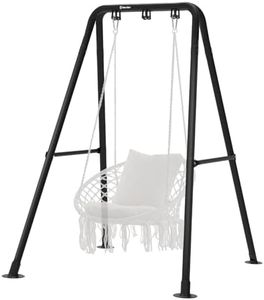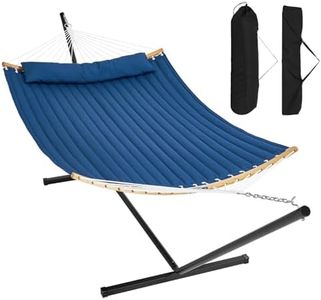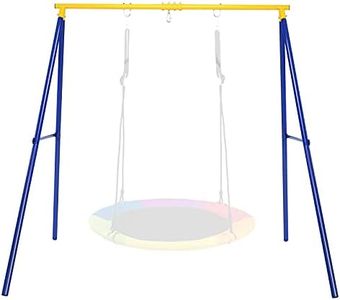We Use CookiesWe use cookies to enhance the security, performance,
functionality and for analytical and promotional activities. By continuing to browse this site you
are agreeing to our privacy policy
10 Best Hammock Stands
From leading brands and best sellers available on the web.By clicking on a link to a third party's website, log data is shared with that third party.
Buying Guide for the Best Hammock Stands
Choosing the right hammock stand can make lounging in your hammock safer, more comfortable, and a lot more convenient. The main things to keep in mind are how, where, and how often you’ll use your hammock. Different stands are built for different uses, so understanding your requirements—like whether it’ll stay indoors, be moved around the backyard, or taken on camping trips—will help narrow down your options. Think also about the size and type of hammock you have, as well as how much space you have to set up your stand. By focusing on the main features and understanding what they mean, you’ll be able to select the stand that fits your needs best.MaterialThe material of a hammock stand generally refers to what it's made from, with the most common being steel, wood, or sometimes aluminum. Material choice is important because it affects durability, weight, weather resistance, and how it looks in your space. Steel is sturdy and typically weather-resistant when coated, great for outdoor use and heavier users, but it can be heavy to move. Wood offers a classic, natural look, often heavier and suited for permanent outdoor setups, but may need extra care to prevent rot or damage from weather. Aluminum is lightweight and rust-proof, ideal for portability, but may not support as much weight. When picking, think about whether the stand will stay in one place, how exposed it will be to weather, and if you plan to move it often.
Weight CapacityWeight capacity tells you how much weight the hammock stand is designed to safely hold. This spec is crucial for safety, as exceeding the limit can cause the stand to bend or break. Weight limits can range from about 200 pounds for lightweight stands to over 450 pounds for heavy-duty versions. Choose a stand that can support both your weight and that of anyone else who might use the hammock at the same time. If you're sharing your hammock or want peace of mind, opt for a higher weight rating.
Size and LengthThe size and length of the stand determine which hammocks it can support and how much space it will take up. Stands generally come in different lengths, often between 9 and 15 feet. It’s important to match the length of the stand to the overall length of your hammock (including the ropes or chains). A stand that’s too short won’t fit your hammock properly, and one that’s too long can make setup awkward or unsafe. Measure your available space and your hammock before choosing a stand.
PortabilityPortability refers to how easy it is to move or transport the stand. Some stands are lightweight or designed to fold up quickly, making them easy to carry for camping, traveling, or moving around your yard. Others are heavier and better for staying in one spot. If you want the flexibility to use your hammock in different places or even take it with you, look for stands that are easy to assemble, disassemble, and transport.
Assembly and AdjustabilityAssembly means how easy it is to put the stand together and take it apart. Some stands have simple, tool-free designs while others require more effort. Adjustability is about whether you can change the length or height of the stand to fit different hammocks. Adjustable stands can be a great choice if you switch hammocks often or want more control over the height above the ground. If you want convenience or may use different hammocks, pick a stand that’s both easy to set up and adjustable.
Weather Resistance and FinishWeather resistance refers to how well the stand can handle being outside through rain, sun, and other elements. This is usually influenced by coatings, paint, or specific treatments (like powder coating on metal or waterproof sealants on wood). Good weather resistance means your stand will last longer and continue to look and perform well even if left outdoors. If you’re planning to use the stand outside and don’t want to move it every time it rains, look for features like rust-proof coatings or weather-protected wood.
